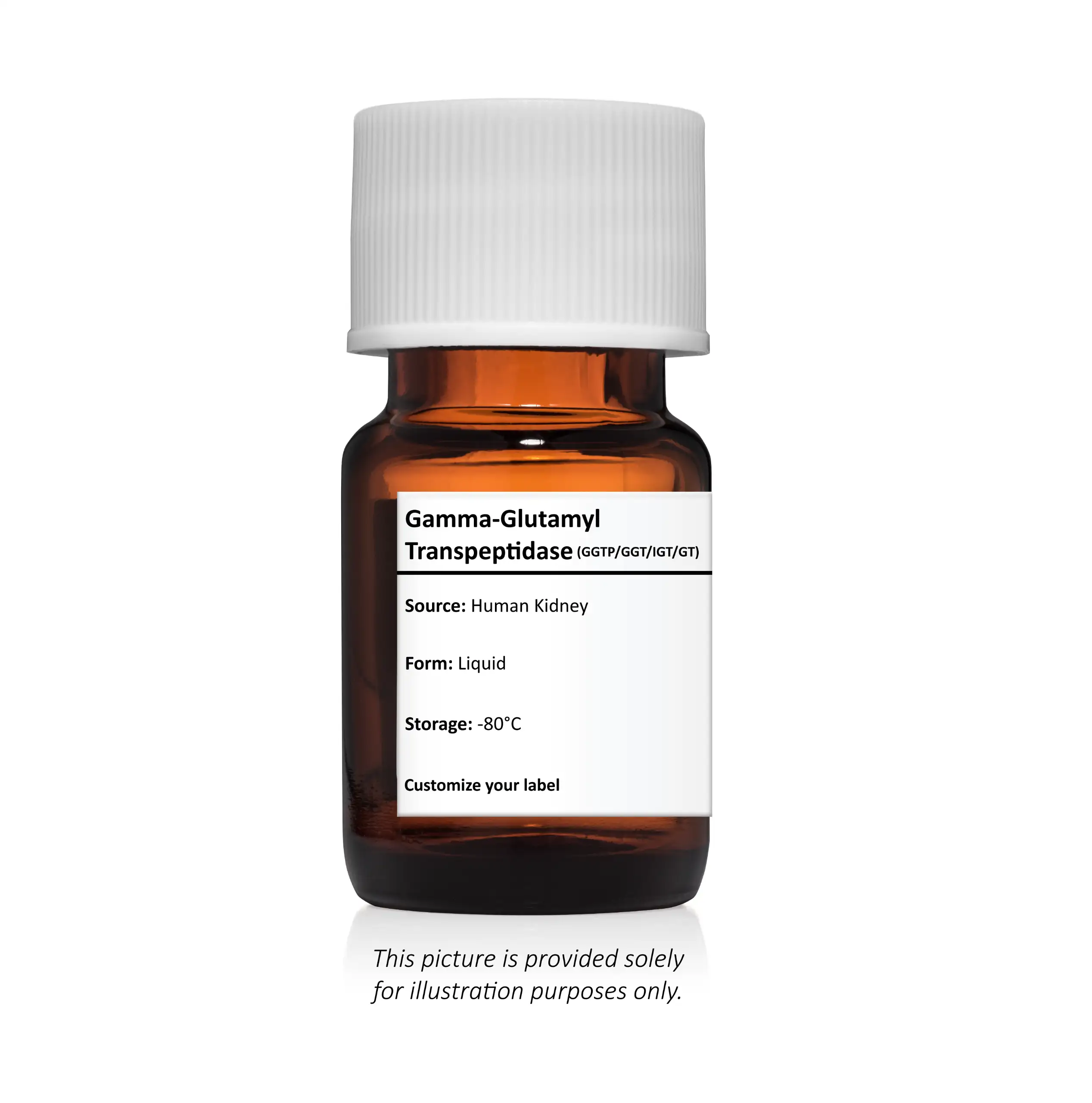Gamma Glutamyl Transpeptidase (GGTP/GGT/IGT/GT)
Gamma-Glutamyl Transpeptidase (GGTP) is also known as Gamma-Glutamyl Transferase. GGTP catalyzes the transfer of a gamma-glutamyl moiety to a wide variety of amino and non-amino acceptors.
| Product Specifications | |
|---|---|
| Source | Human Kidney |
| Form | Liquid |
| Purity | Partially Purified |
| Storage | -80°C |

Although the most abundant source of GGT is the kidney, and serum GGT is often elevated due to various kidney conditions, clinically GGT is predominantly a marker of liver pathologies. It is an especially useful marker of obstructive liver diseases such as biliary obstruction, cholangitis and cholecystitis as compared to ALP, ALT or AST. Another interesting aspect of elevated serum GGT is that unlike most enzyme markers, in at least some circumstances the elevation of serum GGT is not due to a loss of enzyme activity, but rather due to an induction of it. Serum GGT has also been found to be useful in assessing and following liver damage due to alcoholism and is a known risk predictor for the development of hepatoma and other cancers. It has also been used to predict treatment response in patients with hepatitis C, with a high pre-treatment serum level of GGT usually predicting a poor response to treatment. It has also been reported that GGT is an independent risk factor for developing type 2 diabetes. Thus, GGT is a remarkably useful and versatile marker.
Bovine kidney and porcine kidney also available.
